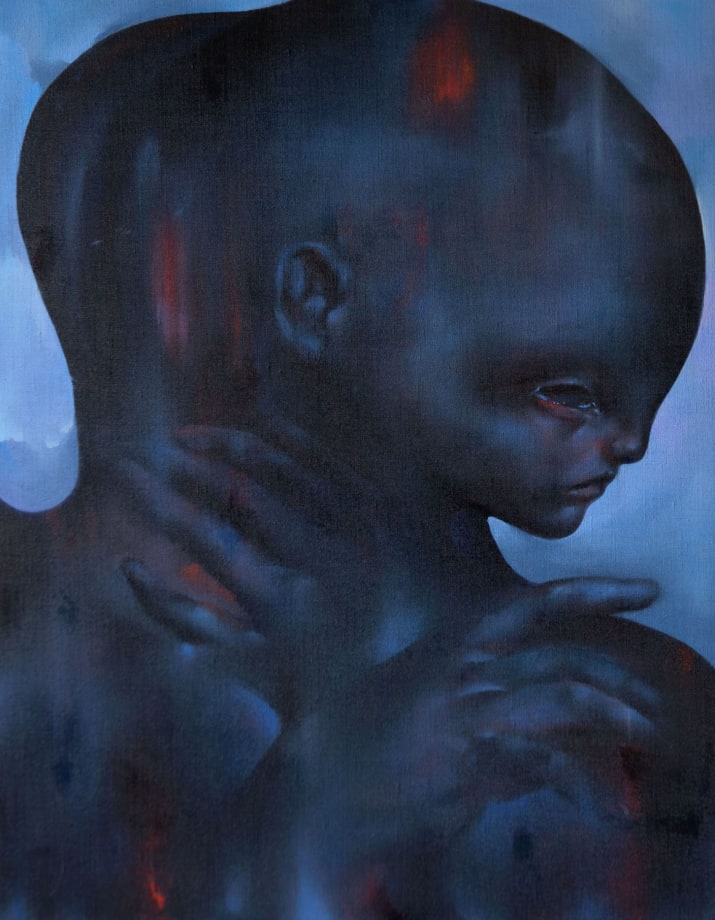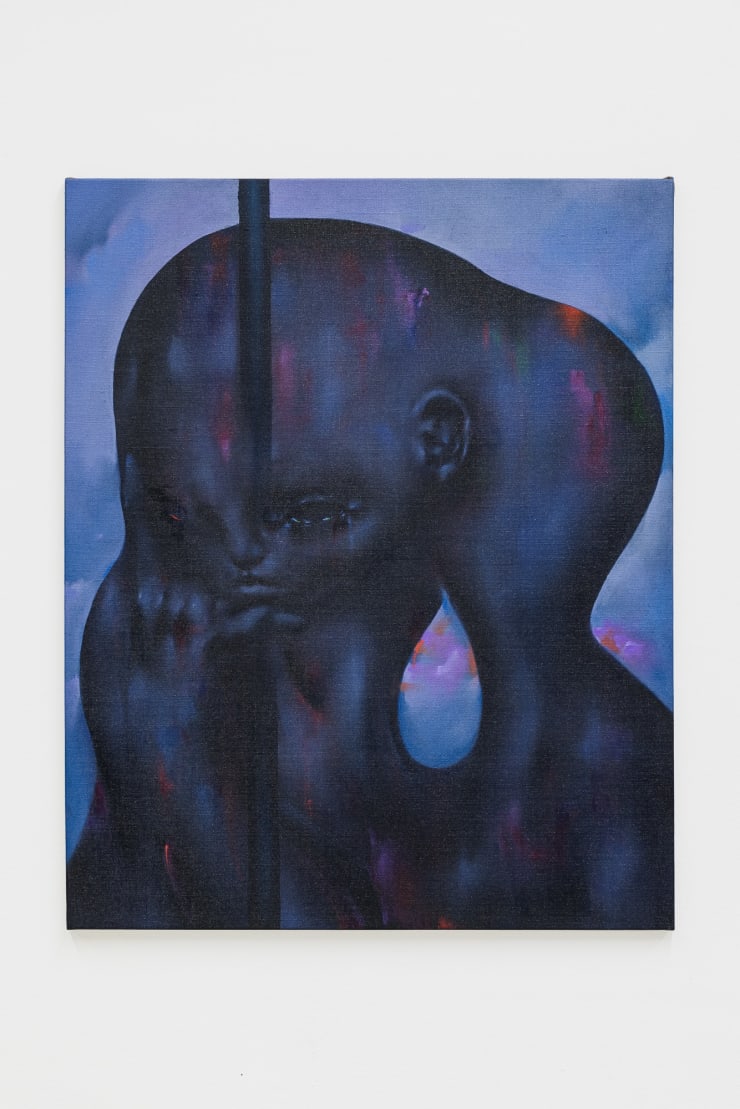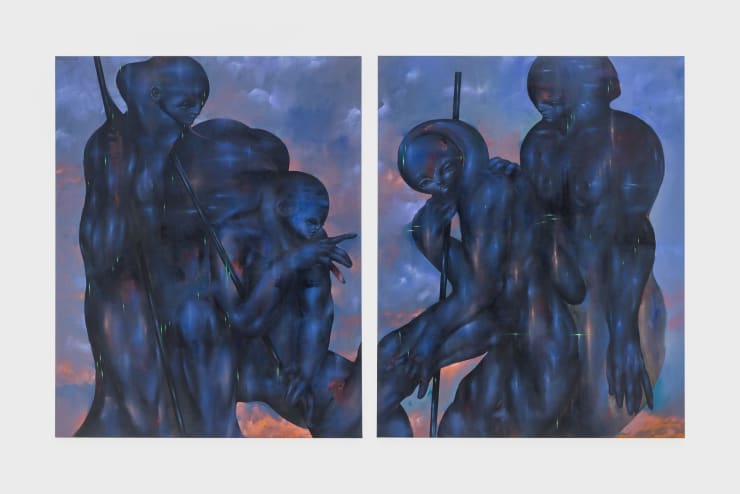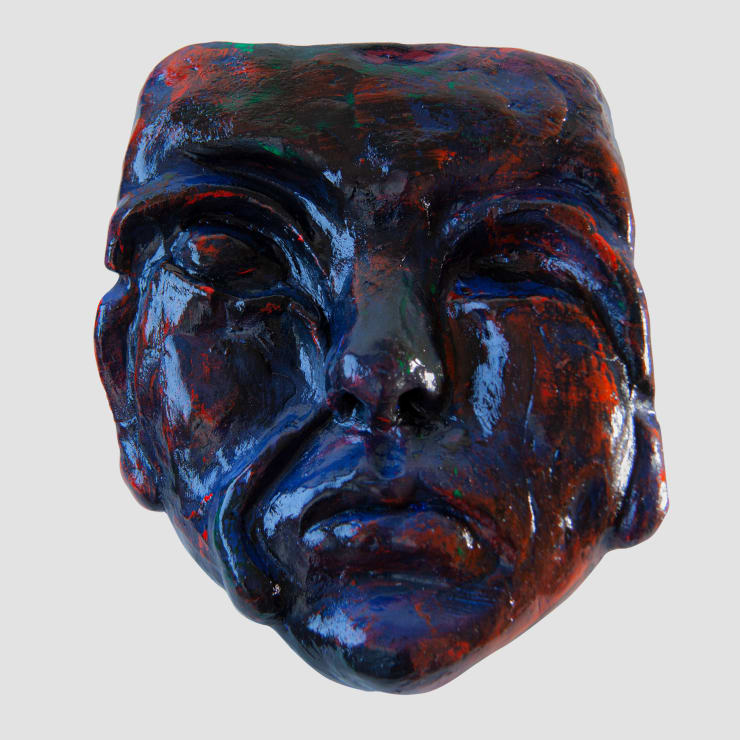Théo Viardin I Et In Arcadia Ego
Past exhibition
Overview
Théo Viardin’s practice on a broad thematic level, explores our relationship to the living, otherness and our environment. Contextually, the basis of Viardin’s work lies in an existential concern for our environment in that as a result of human activity, we as a collective are rapidly endangering the earth in a manner which, at current projections will ultimately make it uninhabitable for our species.
Within this particular group of works and connected figures, Viardin has explored this overarching thematic narrative in relation to Nicolas Poussin’s ‘Et in Arcadia Ego’ (1637-38). Painted in the French Baroque style, the painting depicts a pastoral scene with idealised versions of shepherds from classical antiquity and a female figure gathered around a tomb with the inscription “Et in Arcadia Ego” which translates as “I (the deceased) too lived in Arcadia” or “I (death) too am present in Arcadia”. For Viardin the work holds a particular contemporary relevance in so far as the shepherds confrontation with mortality within an mis-en-scene of springtime abundance is reflective of our current state as humanity. Where after years of growth and increased prosperity we are faced with an ultimate destruction to come.
Works
-
 Théo ViardinPortrait of a shepherd (I), 2022Acrylic and pigment on canvas100 x 80 cm
Théo ViardinPortrait of a shepherd (I), 2022Acrylic and pigment on canvas100 x 80 cm
39 3/8 x 31 1/2 in -
 Théo ViardinPortrait of a shepherd (II), 2022Acrylic and pigment on canvas100 x 80 cm
Théo ViardinPortrait of a shepherd (II), 2022Acrylic and pigment on canvas100 x 80 cm
39 3/8 x 31 1/2 in -
 Théo ViardinPortrait of a shepherd (III), 2022Acrylic and pigment on canvas100 x 80 cm
Théo ViardinPortrait of a shepherd (III), 2022Acrylic and pigment on canvas100 x 80 cm
39 3/8 x 31 1/2 in -
 Théo ViardinStudy for a grave, part 1&2, 2022Acrylic and pigment on canvas162 x 130 cm (each)
Théo ViardinStudy for a grave, part 1&2, 2022Acrylic and pigment on canvas162 x 130 cm (each)
63 3/4 x 51 1/8 in (each) -
 Théo ViardinTombstone, 2022Clay, acrylic paint, gloss varnish
Théo ViardinTombstone, 2022Clay, acrylic paint, gloss varnish
20 x 18 x 5 cm
7 7/8 x 7 1/8 x 2 in
Press release
Théo Viardin’s practice on a broad thematic level, explores our relationship to the living, otherness and our environment. Contextually, the basis of Viardin’s work lies in an existential concern for our environment in that as a result of human activity, we as a collective are rapidly endangering the earth in a manner which, at current projections will ultimately make it uninhabitable for our species.
Within this particular group of works and connected figures, Viardin has explored this overarching thematic narrative in relation to Nicolas Poussin’s ‘Et in Arcadia Ego’ (1637-38). Painted in the French Baroque style, the painting depicts a pastoral scene with idealised versions of shepherds from classical antiquity and a female figure gathered around a tomb with the inscription “Et in Arcadia Ego” which translates as “I (the deceased) too lived in Arcadia” or “I (death) too am present in Arcadia”. For Viardin the work holds a particular contemporary relevance in so far as the shepherds confrontation with mortality within an mis-en-scene of springtime abundance is reflective of our current state as humanity. Where after years of growth and increased prosperity we are faced with an ultimate destruction to come.
As an extension of this, Viardin’s interest in aspects of anticipation in science fiction lead to an exploration of the ideas of dystopia and utopia. In this regard, Viardin’s work aims to project a renewed determination in a reconvened version of utopia. Inspired by the writings of Ursula K. Le Guin (an early proponent of ecofeminism) and speculative fiction author Alain Damasio, whose work transcends the science fiction genre and instead use the imagination to propose alternative realities each with aspects of utopian society. For Viardin, dystopian visions of the future no longer garner interest in so far as we may already be living in a form of such. Therefore, a performative yet active embrace of utopia is ultimately an essential duty in order to envision and thus create a desirable future.
As part of the exploration of a possible utopia, Viardin’s figures themselves are composed in a manner that suggests the timeless. In this regard, pictorially they resemble ancient representations of man alongside classical and neo-classical forms whilst simultaneously manifesting a future body, a distant aftermath of humanity’s evolution. As part of this focus, Viardin oftentimes focuses his compositions on the traditional motifs of nudes and portraits, linking the work to an ongoing canon of our attempts to simultaneously come to terms with our own mortality, whilst actively in pursuit to immortalise the human experience through the artistic object.
The figures in Viardin’s work are deliberately distanced from depictions of gender or race, with an aversion to anatomical accuracy. In so doing the portraits focus on a what connects us and the aspects which universally we recognise within ourselves, on first glance in a physical capacity but ultimately in a metaphorical and existential manner. In this regard, the figures postures and expressions are infused with emotions and perceptions such as melancholy and violence, yet also serenity, care, protection and tenderness. As part of this, Viardin’s works often represent group scenes, with an emphasis on the protection that this imbues, thus highlighting the strength of community as opposed to individualism.
Théo Viardin (Paris, France, 1992) is a French artist based in Paris. He studied Graphic Design in Nantes and Tolouse and co-founded Embuscade, a visual creation studio in 2015.
Viardin’s solo exhibitions include: NBB, 2023, Berlin, Germany (forthcoming); ‘Jusqu’à ce que nous redevenions sauvages’, Linseed Projects, 2022, Shanghai, China; ‘Distant Echoes’, Number Three Spitalfields, 2021, London, UK; ‘Toute présence se mêle avec les pierres’, L21 Gallery, 2021, Palma de Mallorca, Spain. Viardin’s participation in group exhibitions include: ‘Gado Gado’, Everyday Gallery, 2022, Antwerp, Belgium and ‘Have we Met?’ Curated by Thom Oosterhof, Tesoro Collection, 2022, Amsterdam, Netherlands.
Installation Views








